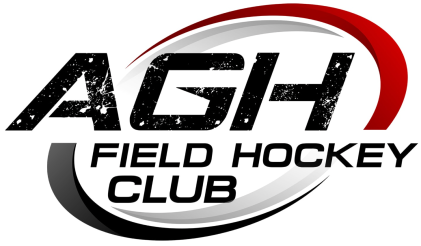concussion/RETURN TO PLAY protocol
AGH Field Hockey Club has adopted the following guidelines regarding concussions or suspected concussions for players. These guidelines are based upon recommendations from the CDC HEADS UP initiative and from the State of Connecticut and other Local Town programs.
A concussion is a type of traumatic brain injury, and all brain injuries are serious. They may be caused by a bump, blow, or jolt to the head or by a blow to another part of the body with the force being transmitted to the head where the brain literally bounces around or twists within the skull. This sudden movement of the brain causes stretching and tearing of brain cells, damaging the cells and creating chemical changes in the brain. Even a “ding,” “getting your bell rung,” or what seems to be a mild bump or blow can be serious.
Concussions can range from mild to severe, and they can change the way your brain normally works. All concussions are potentially serious and may result in complications including prolonged brain damage and death if not recognized and managed properly. They can occur during practices, games, or any recreational activity and can happen even if there is no loss of consciousness. You can’t see a concussion, but you may notice one or more signs or symptoms. They may show up right after the injury or can take hours to days to fully appear. If your athlete reports any symptoms or concussion, or if you notice the signs or symptoms of concussion yourself, seek medical attention right away.
Dangers of playing with a possible head injury/concussion or returning too soon from a concussion: Continuing to participate in athletics or returning to athletics while signs and symptoms are still present leaves the student-athlete vulnerable to greater injury. Not only can returning too soon or not reporting a concussion prolong recovery, but it allows the possibility of sustaining another impact. Sustaining another impact during the time period after a first concussion is known as Second Impact Syndrome. Second Impact Syndrome can lead to severe impairment, and in extreme cases may even be fatal. It is important that student athletes understand the importance of accurately reporting their signs and symptoms.
SIGNS OBSERVED BY COACHING STAFF
· Appears dazed or stunned
· Is confused about assignment or position
· Forgets sports plays
· Is unsure of game, score, or opponent
· Moves clumsily
· Answers questions slowly
· Loses consciousness (even briefly)
· Shows behavior or personality changes
· Can’t recall events prior to hit or fall
· Can’t recall events after hit or fall
SYMPTOMS REPORTED BY ATHLETE
· Headache or “pressure” in head
· Nausea or vomiting
· Balance problems or dizziness
· Double or blurry vision
· Sensitivity to light
· Sensitivity to noise
· Feeling sluggish, hazy, foggy, or groggy
· Concentration or memory problems
· Confusion
· Does not “feel right”
In rare cases, a dangerous blood clot may form on the brain in an athlete with a concussion and crowd the brain against the skull. Call 9-1-1 or take the athlete to the emergency department right away if after a bump, blow, or jolt to the head or body the athlete exhibits one or more of the following danger signs:
· One pupil larger than the other
· Is drowsy or cannot be awakened
· A headache that gets worse
· Weakness, numbness, or decreased coordination
· Repeated vomiting or nausea
· Slurred speech
· Convulsions or seizures
· Cannot recognize people or places
· Becomes increasingly confused, restless, or agitated
· Has unusual behavior
· Loses consciousness (even a brief loss of consciousness should be taken seriously)
- Any player who is suspected of receiving a concussion must be immediately pulled out of any practice, game or competition and may not return to play that day
- Ensure that the player will be seen by an appropriate healthcare professional
- Notify player’s parent/guardian
- Keep the athlete out of play
An Athlete may not return to play until the following has occurred:
1. The athlete MUST be cleared by a medical professional and provide documentation. (Doctor with concussion experience or an Certified Athletic Trainer approved by the AG Hockey Club or its designee)
2. A gradual return-to-play protocol administered by a Certified Athletic Trainer after the athlete is symptom-free at rest:
Day 1: light aerobic exercise (walking, swimming , or stationary cycling) keeping exercise heart rate less than 70% of maximum predicted heart rate. No resistance training
Day 2: sport-specific exercise, any activities that incorporate sport-specific skills. No head impact activities.
Day 3: non-contact training drills
Day 4: full contact practice, participate in normal practice activities
Day 5: return to competition
If any concussion symptoms return during any of the above activities, the athlete should return to the previous level, after resting for 24 hours.
MORE INFORMATION
CDC Heads Up: http://www.cdc.gov/HeadsUp/
Join AGH
Through passion, dedication, and unwavering support, we aim to instill in our youth a love for the sport, a commitment to personal growth, and a sense of belonging to a greater team. Together, we aspire to achieve greatness on the field and beyond.
Join us at AGH Field Hockey Club, where we cultivate the champions of tomorrow and celebrate the journey of today. Together, we score goals, chase dreams, and build a brighter future.
